 Technology
Technology  Technology
Technology  Humans
Humans 10 Everyday Human Behaviors That Are Actually Survival Instincts
 Animals
Animals 10 Animals That Humiliated and Harmed Historical Leaders
 History
History 10 Most Influential Protests in Modern History
 Creepy
Creepy 10 More Representations of Death from Myth, Legend, and Folktale
 Technology
Technology 10 Scientific Breakthroughs of 2025 That’ll Change Everything
 Our World
Our World 10 Ways Icelandic Culture Makes Other Countries Look Boring
 Misconceptions
Misconceptions 10 Common Misconceptions About the Victorian Era
 Mysteries
Mysteries 10 Strange Unexplained Mysteries of 2025
 Miscellaneous
Miscellaneous 10 of History’s Most Bell-Ringing Finishing Moves
 Technology
Technology Top 10 Everyday Tech Buzzwords That Hide a Darker Past
 Humans
Humans 10 Everyday Human Behaviors That Are Actually Survival Instincts
 Animals
Animals 10 Animals That Humiliated and Harmed Historical Leaders
Who's Behind Listverse?

Jamie Frater
Head Editor
Jamie founded Listverse due to an insatiable desire to share fascinating, obscure, and bizarre facts. He has been a guest speaker on numerous national radio and television stations and is a five time published author.
More About Us History
History 10 Most Influential Protests in Modern History
 Creepy
Creepy 10 More Representations of Death from Myth, Legend, and Folktale
 Technology
Technology 10 Scientific Breakthroughs of 2025 That’ll Change Everything
 Our World
Our World 10 Ways Icelandic Culture Makes Other Countries Look Boring
 Misconceptions
Misconceptions 10 Common Misconceptions About the Victorian Era
 Mysteries
Mysteries 10 Strange Unexplained Mysteries of 2025
 Miscellaneous
Miscellaneous 10 of History’s Most Bell-Ringing Finishing Moves
10 Religions In The Middle East You Have Never Heard Of
The Middle East is the birthplace of the world’s three largest Abrahamic religions—Christianity, Islam, and Judaism—and has been the site of numerous religious wars, such as the brutal Crusades. But while nine out of ten people living in the Middle East nowadays identify as Muslim, it hasn’t always been that way.
As the battle for religious dominance of the region raged on centuries ago between the big three, other religions were sprouting up throughout the Middle East, from believers in reincarnation in Egypt to marsh-dwelling John the Baptist worshipers in what is now Iraq. Unknown to many, a few of them have, against all odds, survived. Now centuries old, they are still practiced by devoted worshipers who, despite persecution, have ensured that their ancient ways have been passed down from generation to generation.
“The Middle East was quite a bit more lawless for quite a lot of time, and that’s partly how these groups survived,” author Gerard Russell explained. “Where these groups survived was often the most remote places.”[1]
While, over time, Mesopotamia became Iraq, Anatolia became Turkey, and Persia became Iran, a few vestiges of their fascinating history have remained intact—some of it in their little-known minority religions, carried over from century to century.
10 Samaritanism
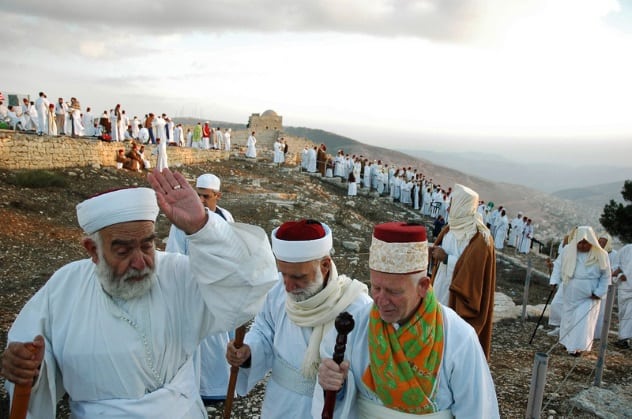
Living on Mount Gerizim in the troubled Palestinian West Bank, Samaritans (yes, that is where the phrase “Good Samaritan” comes from) are an ancient people trying to hold onto their ancient past. Historically barred from marrying outside of their religion and struck down by genetic disease, their population has now reduced to fewer than 1,000 people. At their peak, the Samaritans once numbered three million.
Descended from the Hebrews, the Samaritans speak ancient Hebrew and worship in a synagogue. Their holy book is even called the Samaritan Torah, but they believe modern-day Judaism is not the true version.
Clinging on in their holy mountain just a few miles from Jerusalem and embroiled in one of the longest conflicts in the world, the present-day Samaritans are also an extraordinary anomaly in the Israel/Palestine conflict—they hold both Israeli and Palestinian passports.[1]
9 Yarsanism

Very few people have heard of Yarsanism, and it’s no wonder—the Yarsani (also known as Kakai in Iraq) are a secretive bunch. Founded in 14th-century Iran, this guarded religion believes in reincarnation and still holds its rituals and ceremonies in secret. Known as the “People of Truth,” Yarsanis regard the Sun and fire as holy and seek oneness and purity in life. But there is one strange peculiarity that can help you spot one of this religion’s adherents: According to Yarsani religious text, men must grow and keep a mustache, a tradition that still carries on today.
They also find some safety in their secrecy. Yarsanis have been persecuted for centuries in Iraq and Iran, seen as nonbelievers by religious extremists. Even now in the 21st century, no one is sure of the Yarsanis’ true number, but it’s believed to be around one million.[2]
8 Bahai

Established in the 19th century in Iran, the Bahai faith is a baby compared to the region’s other religions. It was founded by a religious prisoner who believed he was a prophet. The young Iranian declared himself Baha’u’llah (meaning “Glory to God”) and, with it, started one of the newest religions in the Middle East.
And it really took off. In the 21st century, the Bahai faith is claimed by some as the only religion in the world that has grown faster than the general population in every United Nations region in the past century.
Pretty impressive stuff, but this is not so surprising, considering what the Bahai teach—the importance of unity and equality for all and that every religion in the world has worth. In fact, the Bahai community believes that Krishna, Moses, Muhammad, Jesus, and Abraham were all messengers of God but claim that the latest of these messengers is (unsurprisingly) their religion’s founder, Baha’u’llah. World peace, the Bahai say, will only be achieved when the people of the world unite under one universal faith.
Like Islam, selling or drinking alcohol is forbidden in the Bahai faith, and worshipers are expected to fast for 19 days each year during March. Despite this, Bahais continue to be persecuted in many countries, especially Iran, where they are declared as apostates of Islam by Islamic leaders.[3]
7 Zoroastrianism
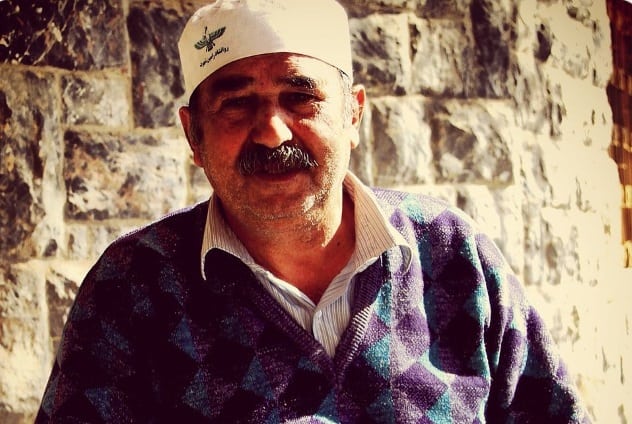
If Bahaism is the baby of the Middle East, then Zoroastrianism is the granddad of the group. Born in the heart of Persia over 3,000 years ago, Zoroastrianism is one of the world’s oldest monotheistic religions.[4] They believe in one all-knowing God, known as Ahura Mazda, or the “Wise Lord,” and core Zoroastrianism beliefs such as in a heaven and hell have influenced and been copied by Christianity, Islam, and Judaism.
In many ways, Zoroastrians ascribe to a view of life that is akin to the idea of karma—do good deeds for the world, and you will be rewarded. And this 3,000-year-old faith does not limit good deeds to just fellow humans; its religious teachings make it clear that nature must be protected and looked after. In fact, Zoroastrianism has even been described as the world’s first ecological religion.
But it’s not all rivers and roses. Zoroastrians fundamentally believe that Earth is a battleground between good and evil and that every person has a responsibility to choose good. So how do we choose good and make sure we don’t stray to the dark side? Well it’s quite easy, say Zoroastrians: You just need to become a Zoroastrian!
6 Ali-Illahism
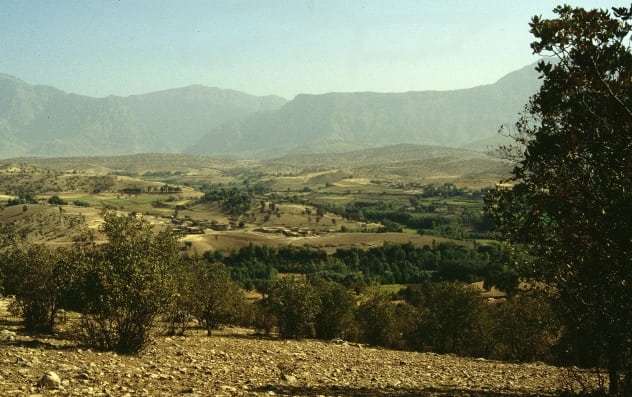
A mysterious religion to many in the Middle East and little-known throughout the world, Ali-Illahism holds the belief that God has been incarnated on Earth throughout history and that Ali—the son-in-law of Prophet Muhammad and successor to him according to Shia Islam—is one of those incarnations.
A merging of religions, Ali-Illahism combines Shia Islam with the rites of ancient Middle Eastern belief systems like Zoroastrianism.[5] This is no surprise; Ali-Illahism is thought to have been born in the “Land of the Lurs,” or Luristan in Western Persia.
5 Druze
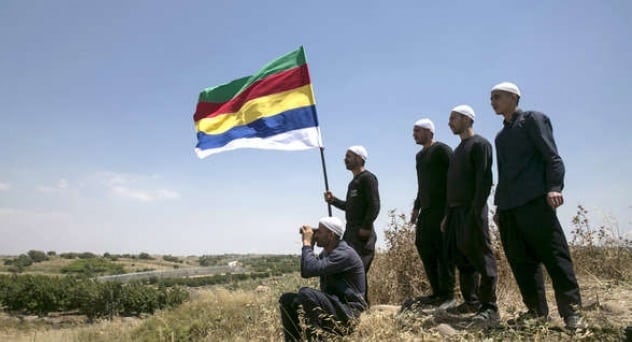
Originating in Egypt but now scattered in small communities in Israel, Jordan, Lebanon, and Syria, the Druze are a reincarnation sect who believe they will be reborn after death.[6] They are also a very philosophical lot, admiring philosophers such as Aristotle and Plato alongside far more familiar religious superstars like Jesus and Muhammad.
As a minority religion, they have survived centuries of turmoil in the Middle East by forging political partnerships with more powerful and dominant groups, a tactic some Druze communities continue to this day. In fact, Druze leaders in Israel signed a deal in 1956 called the Covenant of Blood that made military service in the Israeli army compulsory for young Druze men. In return, the state was to protect and respect the Druze community and religion. Decades later, this deal still stands, and up until recently, Israel even had its own Druze infantry unit.
4 Yazidi
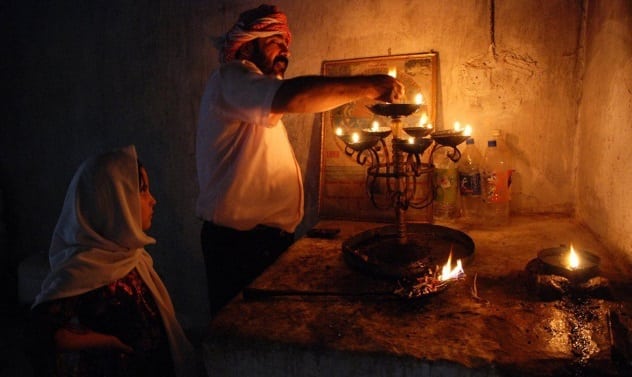
In the last few years, Yazidis have been making headlines around the world, but for horrifying reasons. ISIS extremists have mercilessly targeted the ethno-religious group, attempting a full-scale genocide campaign against them in Iraq, killing and enslaving thousands of Yazidis.
A peaceful religious community, Yazidis believe in one God who has entrusted the world to seven angels—the leader of which is the Peacock Angel, called Melek Taus.[7] For centuries, some adherents to other religions have wrongly claimed that the Yazidis’ Peacock Angel is actually the Devil and, therefore, that Yazidism is a Devil-worshiping cult. Because of this, generation after generation of Yazidi has suffered ongoing persecution in their ancestral home of the Nineveh Plains of Iraq.
Like Muslims, Yazidis pray five times a day, but unlike their fellow Muslims, Yazidis face the Sun when praying, except for a noon prayer when they must face their holy site of Lalish in Northern Iraq. The prayer ritual, which involves wearing a sacred shirt, should never be performed in front of non-Yazidis. Further, spending too much time with non-Yazidis has been generally discouraged in the past, so the community has historically kept to itself.
3 Mandeanism
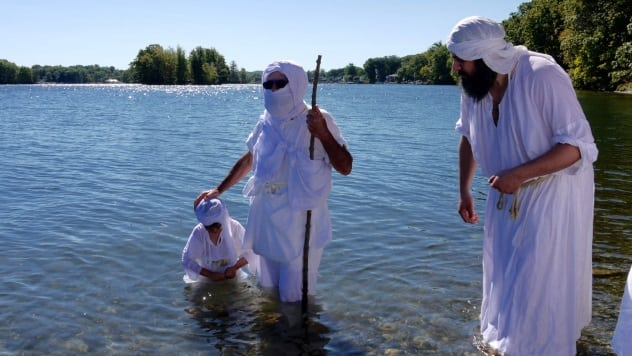
Originating in the third century, Mandeanism is a secretive and private religion born out of the marshlands of what is now Southern Iraq. Speaking Arabic, Farsi, and their own language, Mandraic, followers revere John the Baptist as well as other well-known biblical figures such as Adam, Abel, and Noah.[8] Facing the North Star during prayer, Mandeans are devout pacifists and hold the belief that only God is allowed to take someone’s life.
Living a nomadic life on small islands or man-made floating platforms in their massive swampland home of the Tigris-Euphrates river system, Mandeans have passed down their religion for generations alongside their master skills in boat-building. But with religious persecution and decades of conflict and strife in the Middle East, Mandeans now number just 60,000 to 70,000 people—with only a few thousand still living in their beautiful, boggy ancestral homeland.
2 Gnosticism
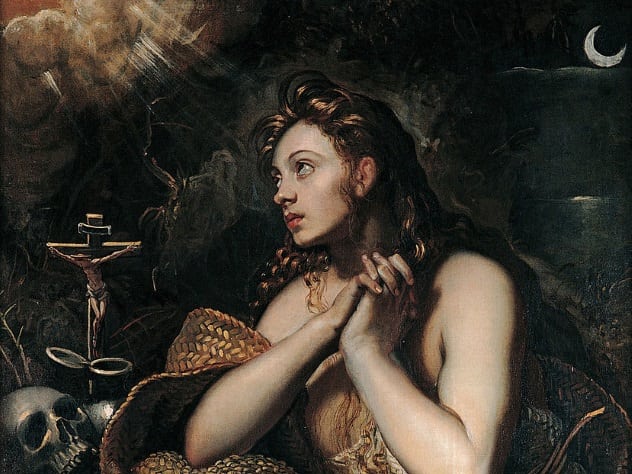
The origins of this covert faith are still disputed, but it is thought by some to have originated in Alexandria, Egypt, and may have preceded Christianity. Early Christians often referred to themselves as Gnostics, with Christianity possibly evolving out of Gnosticism. However, Gnostics don’t define themselves as Christians. Indeed, there are very fundamental differences—for one, many Gnostics believed the world was created not by God but by an evil entity called Demiurge.
Today, Gnosticism is a loosely defined faith that has historically been made up of a diverse array of groups (Mandeanism is one), many of which differed from each other in their customs, traditions, and structure. In Gnosticism, God is known as the Monad, or “The One,” and the belief exists that the material world is evil and that the only way to salvation is through discovering the “secrets” of the universe.[9]
Interestingly, many Gnostic writings were, unlike many other religions, written and influenced by women. Mary Magdalene is thought to have been one of them.
1 Shabakism
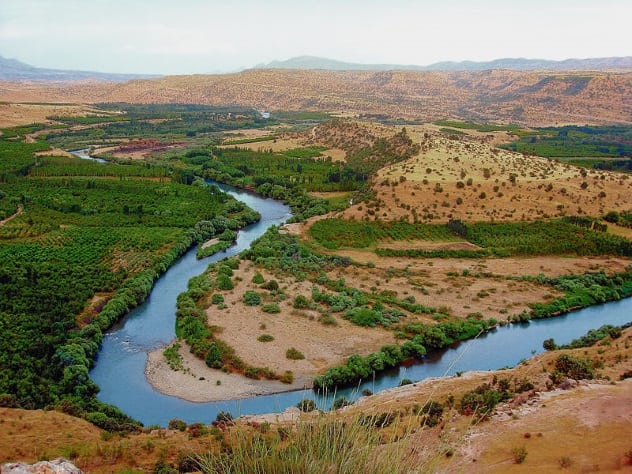
A real mixing pot of a religion, the Shabak are a people who live in Northern Iraq and whose beliefs and society have been inspired by the faiths and cultures that surround them. Their holy book is written in Turkomen, they drink wine and practice confession like Christians, and they make pilgrimages to Yazidi holy sites as well as Muslim ones.[10]
The Shabak are a spiritual lot, believing God’s wisdom can be obtained through ritual meditation led by a mystical leader or spiritual guide called a pir. And their origins are just as mysterious. Some suggest that the Shabak are descendants of the Qizilbash Army, a fierce 13th-century Shia force. Others believe they were refugees from Anatolia.
But like many other minority religions in the Middle East, life for the Shabak has not been easy. Often persecuted, forced to assimilate, and treated as second-class citizens, they now number just 250,000.
I’m a professional writer and journalist who has been reporting, writing and traveling around the world for several years.
Read about more religions who may not have known about on 10 Mysterious Religions Practiced In The Shadows and 10 Monotheistic Gods You’ve Never Heard Of.








